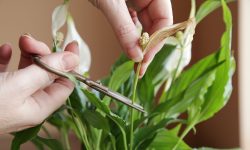Hydrangeas are among the most enchanting flowering shrubs found in gardens across the world. With their lush foliage and generous clusters of blooms, they bring elegance and seasonal color to almost any landscape. But achieving those full, vibrant blooms year after year requires more than just watering and sunlight. One of the most important and often misunderstood tasks is pruning. Knowing when you cut back hydrangeas directly affects the plant’s health, structure, and future flower production.
The timing of hydrangea pruning depends largely on the specific variety you are growing and how it blooms—whether on old wood, new wood, or both. Prune too early and you may lose next season’s blossoms. Prune too late and you could weaken the plant or delay blooming altogether. This guide will help you understand the best time to cut back hydrangeas based on their types, seasonal growth habits, and blooming cycles to ensure bigger, healthier blooms year after year.
Understanding Hydrangea Blooming Habits

Before deciding when to cut back your hydrangeas, it’s essential to understand how they bloom. Different types of hydrangeas have different flowering habits. Some bloom on old wood, which refers to stems that developed during the previous growing season. Others bloom on new wood, meaning they flower on fresh growth produced during the current season.
Hydrangeas that bloom on old wood begin forming their flower buds in late summer or early fall. These buds overwinter on the stems and burst into bloom in late spring or early summer. Pruning these types in late winter or early spring removes those buds and eliminates the upcoming season’s flowers.
On the other hand, hydrangeas that bloom on new wood form flower buds in spring and bloom later in the season, typically from mid to late summer. These varieties can be safely pruned in late winter or early spring because they haven’t yet formed any buds. Timing becomes a crucial factor when planning your pruning schedule. Mistaking one for the other can mean a season with fewer or no flowers.
Identifying Your Hydrangea Type
To determine the best time to cut back your hydrangeas, you’ll need to identify what type you’re growing. The most common hydrangea types are bigleaf (Hydrangea macrophylla), oakleaf (Hydrangea quercifolia), panicle (Hydrangea paniculata), smooth (Hydrangea arborescens), and mountain hydrangeas (Hydrangea serrata). Each one responds differently to pruning because of its growth and blooming pattern.
Bigleaf and oakleaf hydrangeas bloom primarily on old wood. These types require careful timing, and excessive pruning can severely impact their floral display. Panicle and smooth hydrangeas bloom on new wood, making them more forgiving when it comes to seasonal pruning. Mountain hydrangeas are somewhat in between and can bloom on both old and new wood, requiring a balanced approach.
Knowing your hydrangea variety will not only guide your pruning schedule but also help you manage your expectations for blooming size, timing, and overall plant behavior. If you are unsure of your hydrangea type, observe the blooming pattern and leaf shape through the growing season to identify its characteristics.
The Best Time to Cut Back Hydrangeas That Bloom on Old Wood
For hydrangeas that bloom on old wood, such as bigleaf and oakleaf varieties, the ideal time to prune is immediately after they finish flowering in the summer. This window, usually from late June through early August depending on climate, allows the plant to recover and set new buds for next year’s bloom before fall sets in.
Cutting back these hydrangeas too late in the season—especially after early fall—can prevent the plant from forming the buds needed for the next cycle. Since these buds are set in late summer and remain dormant through the winter, any fall or spring pruning removes them and results in a flowerless season.
To encourage healthier growth and more robust blooming, prune spent flower heads, dead stems, and only lightly shape the plant. Avoid severe or heavy pruning unless you’re undertaking rejuvenation pruning, which should be done cautiously and in stages over a few years to prevent bloom loss.
When to Prune New Wood Blooming Hydrangeas
Hydrangeas that bloom on new wood, including panicle and smooth varieties, are best pruned in late winter to early spring before new growth begins. During this period, the plant is still dormant, and no flower buds have formed yet, making it safe to remove old stems without compromising the season’s blooms.
Since these types generate their flowers on the current season’s growth, cutting back in early spring actually promotes the development of strong new stems that produce bigger, fuller blooms. In fact, these varieties respond well to aggressive pruning and can even be cut back to one or two feet from the ground without negative effects.
This type of pruning not only revitalizes the plant but also ensures better air circulation, stronger stems, and fewer issues with flopping flowers. It’s a reliable way to encourage lush growth and beautiful blooms, especially in climates with long winters and shorter growing seasons.
Special Considerations for Reblooming Hydrangeas
Some modern hydrangea varieties have been bred to bloom on both old and new wood. These reblooming types, such as the Endless Summer® series, provide more flexibility in pruning but still benefit from careful timing. While they can survive early spring pruning, removing too much old wood still limits the early season blooms.
For reblooming hydrangeas, it’s best to prune selectively throughout the growing season. Removing spent flowers as they fade helps encourage reblooming on new wood later in the summer. However, avoid cutting back stems aggressively unless you are certain they have already flowered or are dead.
This dual blooming habit makes it important to monitor plant behavior throughout the year. Pruning decisions for reblooming hydrangeas should be informed by observation rather than a strict schedule. Keeping a gardening journal or seasonal notes can be helpful to track blooming patterns and responses to previous pruning efforts.
The Impact of Pruning on Bloom Size and Quality
Pruning does more than simply shape the plant; it has a significant impact on bloom size and overall plant health. Cutting back hydrangeas at the correct time helps redirect the plant’s energy into strong shoots and flower formation rather than maintaining old, woody stems.
In the case of new wood bloomers, heavier pruning encourages the plant to produce fewer but larger flower heads. This is especially true for smooth hydrangeas like ‘Annabelle’, where cutting the plant down to the ground results in oversized blooms. For some gardeners, this is desirable, while others may prefer more numerous, smaller flowers for a fuller appearance.
Old wood bloomers, by contrast, respond better to light pruning. Removing only dead or damaged wood keeps the plant healthy and prevents overcrowding, which can inhibit airflow and lead to disease. Well-timed light pruning ensures that the plant has adequate resources to support the next season’s blooms and remain structurally sound.
How Climate and Region Affect Pruning Time
Your local climate plays an important role in determining when to prune hydrangeas. In colder regions with harsh winters, it’s advisable to delay spring pruning until the threat of frost has passed. This prevents potential damage to newly emerging growth and allows you to assess winter dieback more accurately.
In warmer climates, the growing season starts earlier, and hydrangeas may form buds sooner. This means the window for pruning old wood bloomers is shorter, and pruning must occur quickly after flowering. For new wood bloomers, early spring remains ideal, but pruning can be done a bit earlier due to milder winter conditions.
Additionally, weather patterns from year to year can shift your pruning schedule. An unusually warm winter may result in early bud development, requiring faster action in spring. Staying attuned to your local conditions and observing your plants closely will yield the best results over time.
Common Pruning Mistakes to Avoid
Many gardeners unintentionally reduce their hydrangea blooms by making a few common pruning mistakes. One of the most frequent errors is cutting back old wood bloomers in late winter or early spring, thinking it will encourage growth. In reality, this removes the flower buds formed the previous summer and results in no flowers that year.
Another mistake is pruning too aggressively, especially with older or weaker plants. Removing too much at once can stress the plant and inhibit future growth. Pruning should be done in moderation and with purpose, whether you’re shaping, rejuvenating, or simply maintaining plant health.
Failure to sanitize pruning tools can also lead to disease spread. Hydrangeas are susceptible to several fungal issues that can be exacerbated by contaminated shears. Always clean your tools before and after pruning, and avoid working on wet foliage, which increases the risk of infection.
What to Do After Pruning
Once your hydrangeas are cut back, it’s time to focus on aftercare. A layer of compost or organic mulch around the base of the plant replenishes nutrients and retains soil moisture. Applying a balanced fertilizer in early spring can also support new growth and maximize blooming potential.
Watering is essential, especially during dry periods following pruning. Newly forming shoots need consistent moisture to grow strong and produce buds. However, be careful not to overwater, as soggy conditions can lead to root rot or fungal problems.
Monitoring your plants in the weeks after pruning will help you catch any signs of stress or disease early. As new growth emerges, you’ll see the results of your efforts in the form of lush leaves and, eventually, bold clusters of vibrant blooms.
The Long-Term Benefits of Proper Timing
Pruning hydrangeas at the right time not only improves the quality of blooms for a single season—it also strengthens the plant over the long term. Regular, well-timed cutting back encourages strong root development, better structure, and increased resilience to environmental stress.
Hydrangeas that are pruned properly year after year are less likely to become leggy, overcrowded, or susceptible to pests and diseases. They also maintain a more attractive shape and produce more consistent flowering displays. The effort invested in understanding and applying the correct timing pays off with healthier plants and more rewarding garden experiences.
By getting to know your specific hydrangea types and adjusting your schedule based on seasonal changes, you set the stage for a garden filled with fuller, brighter, and longer-lasting blooms.
FAQ About Cutting Back Hydrangeas
When is the safest time to cut back hydrangeas?
The safest time depends on the variety. New wood bloomers should be pruned in late winter or early spring. Old wood bloomers are best pruned immediately after flowering in summer.
Will my hydrangeas bloom if I cut them back in spring?
Only new wood bloomers will reliably flower if pruned in spring. Old wood bloomers may not flower if pruned too late.
How can I tell if my hydrangea blooms on old or new wood?
Observe when the blooms appear and whether they form on new stems. Leaf shape and bloom timing can also help identify the type.
Can pruning help control the size of my hydrangea?
Yes, timely pruning keeps the plant manageable and encourages a more compact, healthier structure.
Is it necessary to prune hydrangeas every year?
Annual pruning is helpful but not always essential. Some hydrangeas may benefit from pruning every few years, depending on their growth rate and health.
Conclusion
Knowing when to cut back hydrangeas is key to unlocking their full blooming potential. By timing your pruning based on the specific type—whether it blooms on old wood, new wood, or both—you give your plant the best chance to produce bigger, healthier flowers. With careful observation and seasonal awareness, your hydrangeas can thrive and reward you with a spectacular floral display year after year.






